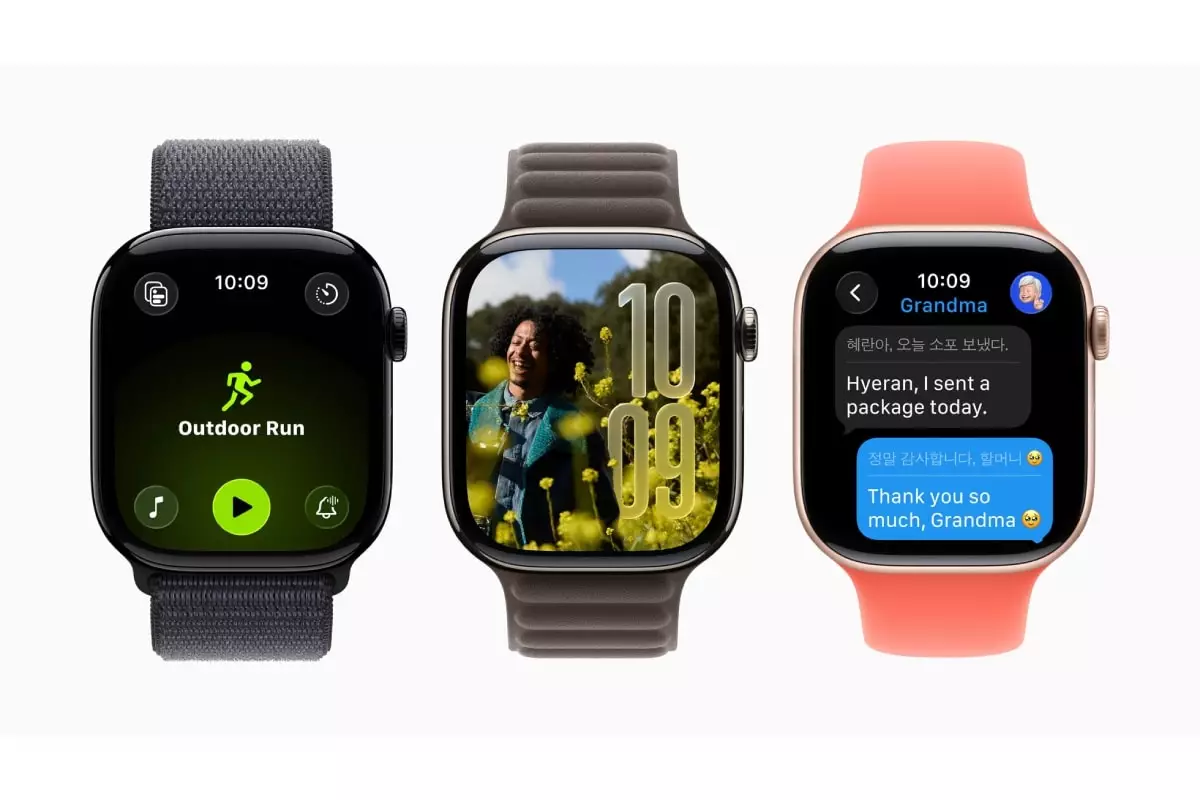At the recent WWDC 2025, Apple unveiled its much-anticipated watchOS 26, showcasing a blend of buzzworthy features and a fresh aesthetic dubbed “Liquid Glass.” Yet, as the tech giant paraded its latest wearables software, one wonders if this version is a remarkable step toward innovation or merely a polished veneer hiding deeper issues within the ecosystem. Sure, the glitzy introduction of features like Smart Stack and AI-powered Workout Buddy is structured to excite, but does it ultimately resonate with users in tangible ways?
While Apple is committed to unleashing groundbreaking advancements, the criteria for true innovation have somewhat diminished. Gone are the days when Apple truly disrupted industry norms. Today, it seems that the focus has shifted toward embellishment rather than revolutionary progression. The question looms: Do users genuinely need another workout buddy who recaps mile splits, or are they longing for functionality that transcends superficial enhancements?
Feeling the Pulse of Wearable Fitness Technology
The Watch’s new AI Workout Buddy offers a personalized pep talk, leveraging a user’s historical data to motivate and educate them during their physical activities. On the surface, it sounds empowering: a companion that not only encourages improved performance but delivers celebratory recaps post-workout. However, tailoring motivational insights through data could be interpreted as an oversimplification of personal fitness journeys. Consumers are not merely numbers in an algorithm; they are beings with complex motivations that can’t be reduced to mere analytics.
Moreover, the addition of new buttons within the Workout app might seem like a step toward user-friendliness, but they raise the concern of clutter rather than clarity. Are users equipped to navigate an ever-increasing labyrinth of digital features on their wrists? Or is Apple overestimating the average consumer’s tech-savvy capabilities? As watchOS expands its offerings, the focus should pivot toward intuitive ease rather than overwhelming variety.
Revolutionizing Communication or Just Increasing Noise?
This iteration of watchOS also claims to enhance communication seamlessly through innovations like Live Translation in Messages. In theory, having texts translated right on one’s wrist seems groundbreaking, especially for multilingual users. However, one could argue that such focus on messaging capabilities may obscure the very purpose of what a smartwatch ought to deliver. The incessant barrage of notifications amplified by a swift wrist flick gesture invokes a sense of chaos. Is the goal to augment our timekeeping devices into mini-communication hubs, or should they prioritize simplicity and clarity?
Moreover, Smart Replies and customizable backgrounds come off as features designed to pacify the user rather than enhance their lives meaningfully. The ever-growing capability to respond to polls or manage notifications in real-time might feel empowering to some, but at what cost? A constant influx of digital noise can detract from moments that require genuine human connection.
Accessing Personal Lifelines Through Technology
Another noteworthy addition in watchOS 26 is the reimagined accessibility features, such as Live Listen with captions for hearing-impaired users. While it demonstrates Apple’s commitment to inclusivity, the execution seems, in some aspects, like playing catch-up rather than leading. True functionality should empower users across the spectrum, and while progress is commendable, there’s a lingering sense of obligation rather than innovation supplanting barriers.
Furthermore, the inclusion of Notes to the Apple Watch feels confusing, to say the least. The utility seems cumbersome on a tiny screen, and many might question whether users want to shuffle between multifaceted applications on their wrist. What about the fundamental utility of a watch? Amidst all these advancements, we must ask: are these features true enhancements, or merely eye-catching novelties?
The Road Ahead: Balancing Innovation with Authenticity
As watchOS 26 hits the developers’ stage through its beta version, the anticipation to witness its impact builds. However, the pressing question complaints: is it setting the stage for genuine evolution, or is it another flashy attempt to divert attention from deeper systemic concerns within Apple’s strategy? While the Liquid Glass design and AI functionalities garner praise, they must genuinely empower users without compromising their experience.
Ultimately, as Apple embarks on its newest journey through the landscape of wearable technology, there’s a crucial need to ensure that ‘innovation’ does not become synonymous with ‘superficiality.’ The intersection of functionality and user experience should remain a priority. It begs a recalibration of focus—from what looks good on the surface to devising features that meaningfully contribute to users’ daily lives, creatively addressing their real needs without overwhelming them.

Leave a Reply